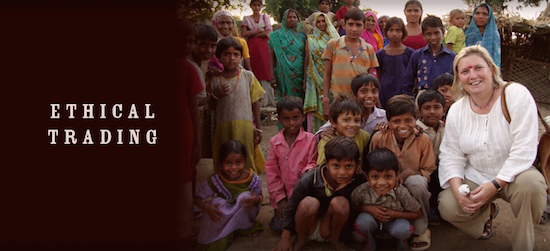Eco Threads vs. Toxic Threads: Green is the New Black

Did you know that some fashion brands are still selling clothing contaminated with hazardous chemicals?
The fashion industry is renowned for using harmful chemicals for dying, bleaching and making synthetic fibre. Even natural cotton is contaminated with tons of chemicals that are disposed of improperly, polluting the world we live in.
It’s a well-known fact that we are victims of the harsh practices of global fashion brands, who prioritise profits over people and the planet. When shopping for a new top or dress, the style and fit are the obvious elements we focus on but in recent years, how and where they come from has become more important and therefore led to an increase in eco-fashion.
The fashion industry leaves behind a huge environmental footprint, from the pesticides used in growing cottons to the chemicals from the toxic dyes; all of which contributes substantially to water pollution and land pollution. However organic fibers, like those made from hemp, don’t use synthetic pesticides or man-made fertilizers, ultimately making it better for the environment.
The concept of eco-fashion is based on recycling and sustainability – reduce, reuse, recycle and economics, ecology and equity. All of these qualities essentially make the planet and the society a better place to live.
Many designers and distributors of eco clothing are also making an additional effort to ensure that the materials are produced through sustainable farming methods, meaning that farmers get rewarded for their efforts and stay above the poverty line. Buying clothes labelled under the Fair Trade Act means you can be certain that materials are produced under safe working conditions, and the people who make them earn a fair wage. That says a lot, when you consider an industry that is renowned for its harsh labour and dangerous working conditions. Fair Trade means that society moves towards economic growth and stability. However it’s very much in our hands. We need to increase the demand for these materials so that the production process in these sectors can flourish, which will generate further investment and employment for more people in poorer countries.
There’s little doubt that environmental awareness amongst fashion consumers is rising but in fashion, sustainability can’t drive sales without desirability. Once upon a time, eco-fashion was known to be practical, yet drab and dreary. It was identified by shapeless designs and scratchy, unattractive fabric but thanks to the innovation of many designers, eco-fashion is now considered as a rising trend. This new wave of eco-fashion owes its popularity to groundbreaking designers like Stella McCartney and Giorgio Armani, who elevated eco awareness through their designs as far back as the early 90’s. Now with lots of celebrities committed to going green, it’s no surprise that the trend has gained popularity.
Eco fashion has evolved. It’s now impossible to tell the difference between eco fashion and mainstream fashion. The only difference is how you feel wearing it, so not only will you feel better, you’ll look good too. With eco friendly clothing becoming more fashionable and affordable, it’s likely to be appearing in more clothes stores across the country. It’s clothing with moral fibre. Now there’s no better excuse to treat yourself to a new wardrobe than that is there?
Susan Waters is founder of Impact Trading and Cotton Roots, clothing suppliers with an emphasis on strong ethical and sustainable manufacture. They passionately support the principles of Fairtrade and are Fairtrade licensees.
